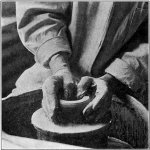The Mystic Mid-Region: The Deserts of the Southwest
Posted in Culture, Lower Elementary, Nature Studies, Public Domain, Upper Elementary on September 25, 2013

Learn about the deserts of the Southwest USA! Between the lofty ranges of mountains which mark the western boundary of the great Mississippi Valley and the chain of peaks known as the Coast Range, whose western sunny slopes look out over the waters of the placid Pacific, lies a vast stretch of country once known Read More »
Wildflowers of the Farm
Posted in Lower Elementary, Nature Studies, Plants, Public Domain, Upper Elementary on September 11, 2013

Almost all plants, including large trees, have flowers–they are flowering plants. Just a few plants have no flower; ferns have none, nor have the mosses and lichens which grow on walls and rocks and on the stems of trees. Fungi, too, such as the mushroom, have no flowers. Nearly all other plants have flowers. It Read More »
The Defense of the Castle
Posted in High School, Public Domain, Western Civilization on August 31, 2013

For it should be remembered in reading history that war has both its science and its art, and that great warriors have been adepts in both, and by both have preserved civilization against the external and internal enemies who would have destroyed it. This is the story of the siege on an English castle during Read More »
The Potter’s Craft
Posted in Art, High School, Lower Elementary, Middle School, Public Domain, Upper Elementary on August 31, 2013

The production of pottery was, at first, the supplying of a need. Clay offered a medium for the making of household utensils which were at once fireproof and impervious. The work does not belong strictly to the earliest stages of civilization but is a development of advancing refinement. The artist interested in clay and pottery Read More »
Microscopes – History, Use, and Lessons
Posted in Public Domain, Science on August 22, 2013

Microscope, the name of an instrument for enabling the eye to see distinctly objects which are placed at a very short distance from it, or to see magnified images of small objects, and therefore to see smaller objects than would otherwise be visible. The name is derived from the two Greek words, expressing this property, Read More »






